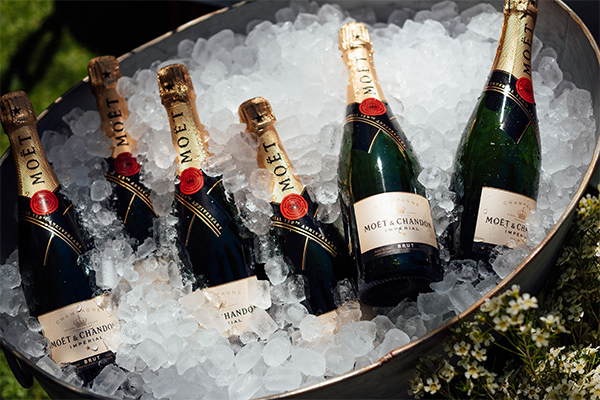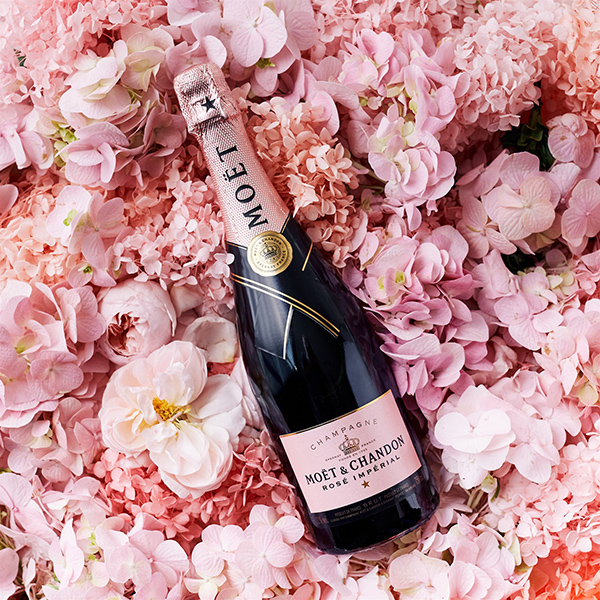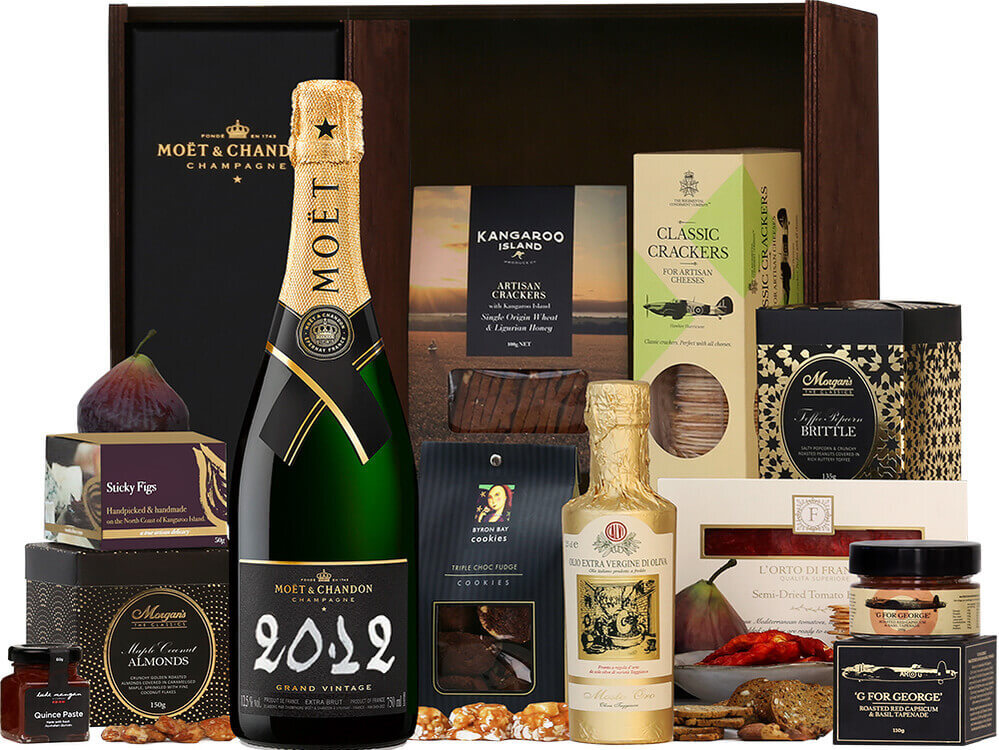
How Is Champagne Made?
Author: Nikki Barnett Date Posted:6 May 2021

Discover The Special Process Of Making Champagne
Popping open a bottle of champagne or sparkling wine is the perfect way to make any occasion a celebration. Prized for its refreshing bubbles and delightfully toasty bread aromas, a good bottle of bubbly will take over the senses. But you don’t need to reserve champagne only for a special occasion! Enjoying a bottle of delicious sparkling wine with friends is a wonderful way to add a little luxury to any dinner party or your weekend drinks.
Whether you love champagne and you'd like to know more about what makes it so wonderful, or you're a complete beginner who wants to know what all the fuss is about, our guide to champagne and sparkling wine explains how champagne is made, and the difference between still and sparkling wine.
How is Champagne Made vs Wine
For both champagne and sparkling wine, the most popular grapes are Pinot Noir, Chardonnay, and Pinot Meunier—three grape varieties that are also wonderfully popular for red and white still wines. The difference between champagne and wine is the second fermentation process. Champagne, or any sparkling wine, contains tiny fizzy bubbles of carbon dioxide, while a standard, still wine is a fermented grape juice without the characteristic bubbles. To be called champagne instead of sparkling wine, the wine must be made in France's Champagne region. You can read more about the difference between champagne and sparkling wine here.
Sparkling wines are a lot more time intensive to produce which generally makes them more expensive. The process of making champagne follows a time honoured tradition, even with the introduction of technologies to improve fermentation and consistency.
How Champagne is Made Step By Step
Grape Harvest
In the Champagne region, grapes are picked between August and October. The grapes must be harvested by hand when they are perfectly ripe to ensure the balance between sugar and acidity is just right. Because champagne is made from both red and white grapes, every bunch must be handled carefully to ensure grape skin pigments don’t tint the wine.
Pressing
Entire bunches of grapes are generally pressed together to obtain an uncoloured must from the grapes. For the finest champagnes, each grape variety will be pressed separately so the unique character of each grape’s provenance is respected. For true ‘origin’ champagnes, grapes from each vineyard plot are pressed individually. There is a limit to the volume of wine that can be obtained from each press to ensure the finest quality wine. The first press gives the highest quality grape must, or cuvée. The second press, or taille, is generally a lower quality but richer in colour and tannins.
First Fermentation
The clear grape must is transferred to stainless steel tanks or wooden barrels. About 24 hours after the grapes have been pressed, natural yeasts are added to start the first fermentation process. It takes around 8 to 10 days for the sugars to be completely converted into alcohol to produce a still, dry white wine with a high acid base.
Blending
This is where the true magic starts to happen. Master vintners will taste and select the perfect blend of wines to create a range of champagnes to best present the year’s harvest. Wine from the current harvest may be blended with reserve wines to produce a non-vintage NV champagne. If the decision is made to create a vintage wine, these will be blended to ensure the champagne will age exceptionally well.
Tirage or Second Fermentation
This part of the champagne making process is how sparkling wine gets its bubbles. The Méthode Traditionnelle, or traditional champagne making method, produces ultra-premium bubbles. The liqueur de tirage of still wine, sugar, and yeast is individually bottled, with each bottle sealed with a temporary crown cap. During the second fermentation, all of the sugar is converted into alcohol. Bottles are stored horizontally at high humidity and a constant temperature of 10-12°C. This slow, natural yeast-driven chemical reaction produces carbon dioxide that gives the wine its bubbling effervescence.
Aging on the Lees
The magic of the champagne method lies in the slow aging period. As part of the second fermentation process, spent yeast cells, called lees, are produced. The wine will age on the lees for some time before they are removed from the bottle. Time spent on the lees adds complexity to the wine and is what gives traditionally made sparkling wine its characteristic bread dough aromas and flavours. The best sparkling wines and champagnes will age for a minimum of 15 months or several years.
Riddling
Remuage or riddling is the process where the natural sediment is removed from the champagne bottle. The bottles are racked and, over the course of several days, their position is slowed altered from horizontal to almost vertical with the capped neck facing down. Gravity forces the spent yeast particles and sediment towards the neck.
Disgorging
In the process of dégorgement or disgorging, the crown cap needs to be removed to expel the sediment without losing precious champagne or its distinctive effervescence. The neck of the bottle is dipped in a freezing brine solution at minus 26°C and then turned upright and briefly uncapped. The internal pressure forces the semi-frozen yeast plug from the bottle. The bottle is immediately topped up with a small amount of liqueur d’expédition, or dosage, which is a mixture of wine and sugar balanced to suit the style of champagne being created. This is what determines the sweetness of the final champagne as brut, sec, or demi-sec.
Corking
With the bottle topped up, the wine bottle is corked and wired to ensure the high internal pressure needed to allow the carbon dioxide to create the beautiful champagne bubbles. The final bottle of sparkling champagne will be allowed to rest for a further few months, or even years, to allow the final flavour to combine to perfection.
How is Rosé Champagne Made?
Pink champagnes and sparkling wines are popular all year round. The soft bubbles with the greater red-fruit forward flavour and intensity of rosés means they go well with everything. There are two ways of making rosé champagne: maceration (traditionally known as the saignée method) and blending with red wine (assemblage method).
The saignée (or bleeding) method involves contact with the macerated black or red grape skins and the seeds during pressing until the desired colour is achieved. The longer the skin contact, the darker the sparkling wine will become. Often, anywhere between 12 and 48 hours is common, and it requires constant monitoring to ensure quick removal of the skins once the correct rose shade is achieved.
The assemblage method of making rosé champagne is easier and less labour intensive. In this process, a small amount of red wine is added to the fermenting juice. This is commonly around 10 to 15% of the red wines pinot noir or pinot meunier. While more labour intensive and with more room for error, the pink champagne rose de saignée is generally a superior sparkling wine with a far richer aroma and tasting experience.
Madame Clicquot, of Veuve Clicquot, was one of the first wine makers to sell rosé champagnes commercially back in the late 1700s. Around the same time, the oldest recorded order of Moët et Chandon’s rosé champagne was noted in their account books from 1801 when Napoleon ordered 100 bottles of 1796 rozé for himself, and another 100 for his mother.

Choosing The Best Vintage or Non-Vintage Champagne
Vintage champagnes are not necessarily better than non-vintage wines. Each house has its own distinctive style and preferred blend of pinot noir, chardonnay, or pinot meunier grapes. Veuve Clicquot Yellow Label offers distinctive flavours of buttered toast, brioche and biscuit, while Moët & Chandon Brut reveals subtle pear, citrus and brioche notes.
Non-vintage sparkling wines offer winemakers the freedom to create blends that highlight the house style. Non-vintage wines tend to be fresher, lighter, more fruitful, and designed to be enjoyed on release. A premium NV cuvée will showcase the label’s flagship tastes and aromas, and are the ideal choice for those wanting to enjoy quality bubbly more often.
With the added luxury of extended aging, vintage champagnes are celebrated for their uniqueness, and are traditionally richer and more complex on the palate. While vintage champagne and sparkling wines may show more distinct notes specific to the region where the grapes were grown, choosing the best bottle of bubbly is all about personal preference.
What Years Are The Best Vintage Champagne Years?
Because of the long ageing process for vintage champagne, it can take a decade before a full assessment is made of the end result. For the most recent vintage years, 2018, 2015, 2013, 2012, 2008 have all been acclaimed as strong vintage years.
Enjoy Champagne Everyday With Luxury Hampers
Gift your friends with everyday luxury with the finest champagne and sparkling wine gift hampers. The Hamper Emporium range includes premium Australian sparkling wine from house Chandon, the famous Veuve Clicquot world-class dry Champagne, Moët & Chandon Brut Imperial NV Champagne, the lively Moët Rosé Imperial, and gourmet luxury with an exquisite bottle of Moët & Chandon 2012 Grand Vintage Champagne. Browse to find the perfect sweet or savoury gourmet hamper with champagne and make every occasion one to remember.













